Treasures
19th Century Chair
A 19th century walnut and elm Captain’s spoon-back open armchair grained to simulate rosewood, turned legs, rails and stretchers, brass castors to feet, pierced scroll arm posts and two vase-shape vertical splats, black hide cover to seat.
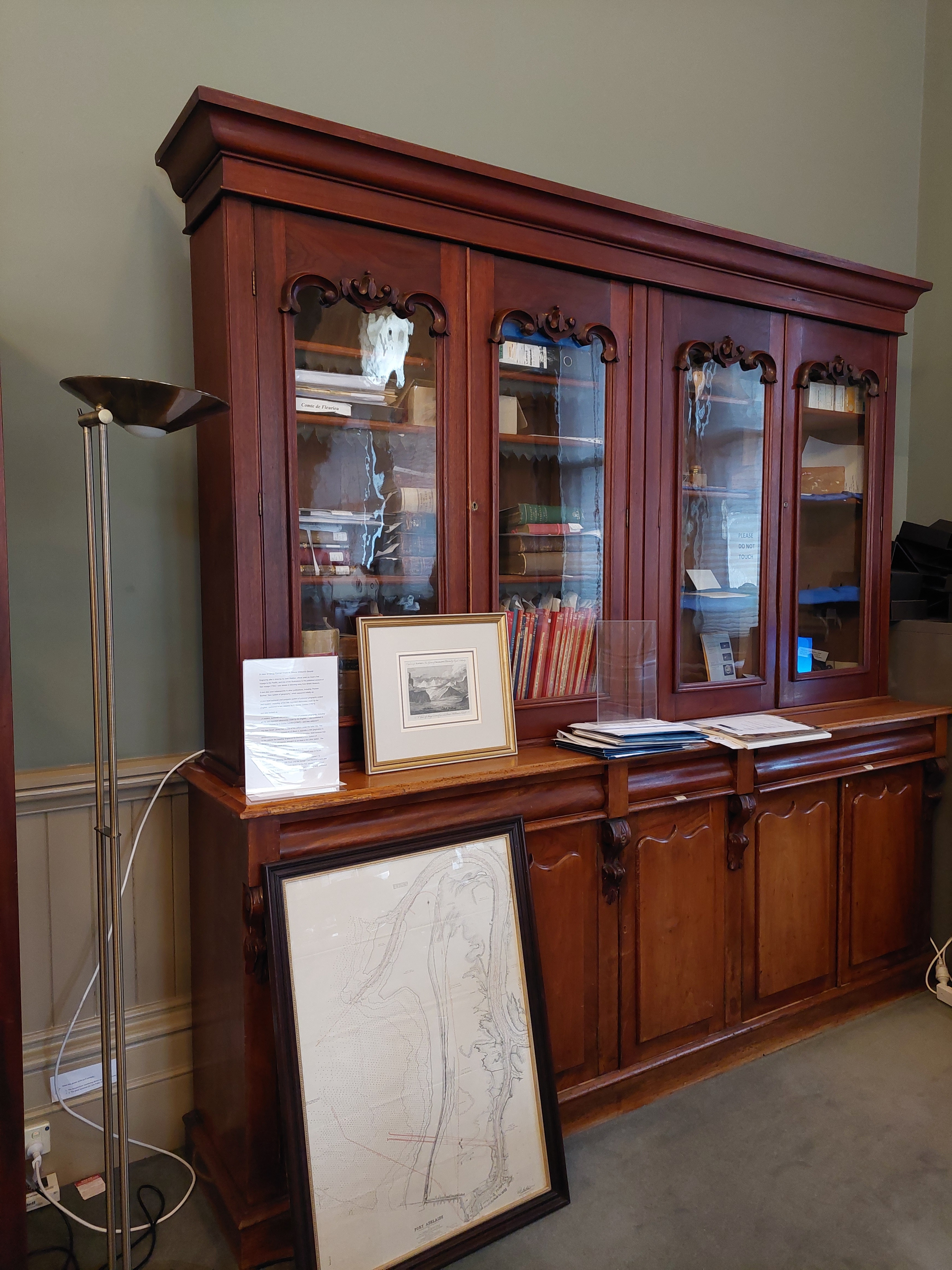
Benham Bookcase
A 19th century Australian cedar colonial bookcase, the upper portion with moulded cornice, four glazed doors enclosing shelves, surmounted by carved C scrolls, flower and foliage ornaments, lower portion with moulded fronts to the drawers and semi-shield shape applied panels to the doors.
Calvert Flag
Flag used in an expedition led by L. A. Wells, of Adelaide, which left for the Fitzroy River in June, 1896, from Cue, W.A. The expedition was equipped by A. F. Calvert and sent out under the auspices of the Society. C. F. Wells and G. L. Jones perished and the expedition flag was used to cover their coffins.
Colonial and Indian Exhibition Lithograph
A chromo-Iitho illuminated certificate emblematic of the continents after a painting by Thos. Riley, produced for the Colonial and Indian Exhibition, London, 1886. It was presented (with a Commemorative Medal) to the ‘Geographical Society of Australasia’ and therefore was probably acquired in the first season of the Society, 1885-86.
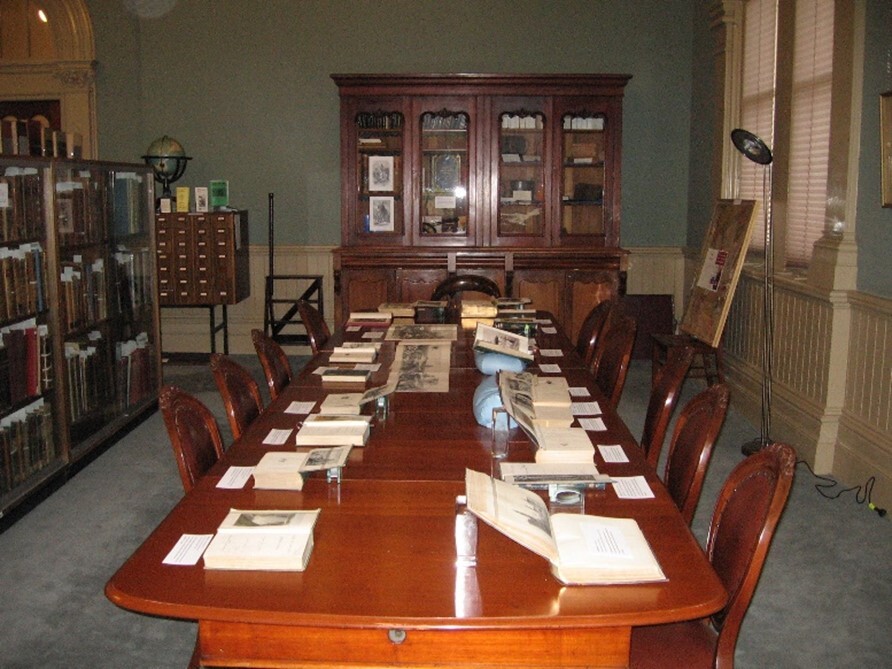
Colonial Dining Table and Chairs
A 19th century Australian cedar colonial dining table with oblong extending top with slightly D-shape ends, including seven leaves, five turned and fluted legs (one of which is to centre), with brass castors to feet, c. 1860, 473 cm over-all length. A set of nine mid-Victorian mahogany dining chairs, each with oval back surmounted by carved scroll and foliage ornament, turned front legs with carved acanthus decorated knees, hide covers to seat and back, c. 1865. The chairs were refurbished in 1985, the table was refurbished in 2002.

Despatch Bag
This despatch bag was used during the construction of the Overland Telegraph, and belonged to Hon. J. Lewis, CMG, who ran the ‘express’ service between the construction camps on the northern and southern portions of the line.
Early South Australian Currency and Medals.
Descriptions of individual items are included in the case.
Fragment of Sturt’s Boat.
On a part of the boat which Sturt carried on his Northern Expedition, leaving Adelaide in August, 1844, is the following description: “Portion of boat taken by Captain Charles Sturt into the interior of Australia. He arrived at Depot Glen on 27 January, 1845, and left on 17 July – after enduring great hardship from want of water. The boat was left in the waterhole and was found in a tree 40 feet from the ground.”
Fragments of the Tablet Erected by Flinders at Port Lincoln, Feb., 1802.
To commemorate the death of eight of his men at Port Lincoln, Flinders inscribed a copper plaque. As he described it: “I therefore caused an inscription to be engraven upon a sheet of copper and set up on a stout post at the head of the cove, which I named Memory Cove . . .”‘
G. J. Graham
Plan of a company to be established for the purpose of founding a colony in Southern Australia, purchasing land therein, and preparing the land so purchased for the reception of immigrants, by G. J. Graham with Ridway and Sons, London, as publishers, 1831. This is one of the earliest publications relating to the proposed colony of South Australia. The half title is inscribed by W. Gouger.
Gill’s “Coinage of South Australia”. MSS and Published Book.
Thomas Gill, of Glen Osmond, was Under Treasurer of S.A. from 1894 to 1920 and Treasurer of the Society for many years. The Society published this manuscript as a supplement to Vol. 13 of the Proceedings. It is regarded as important source material on early currency, the Gold Escort Route, and the Bullion Act.
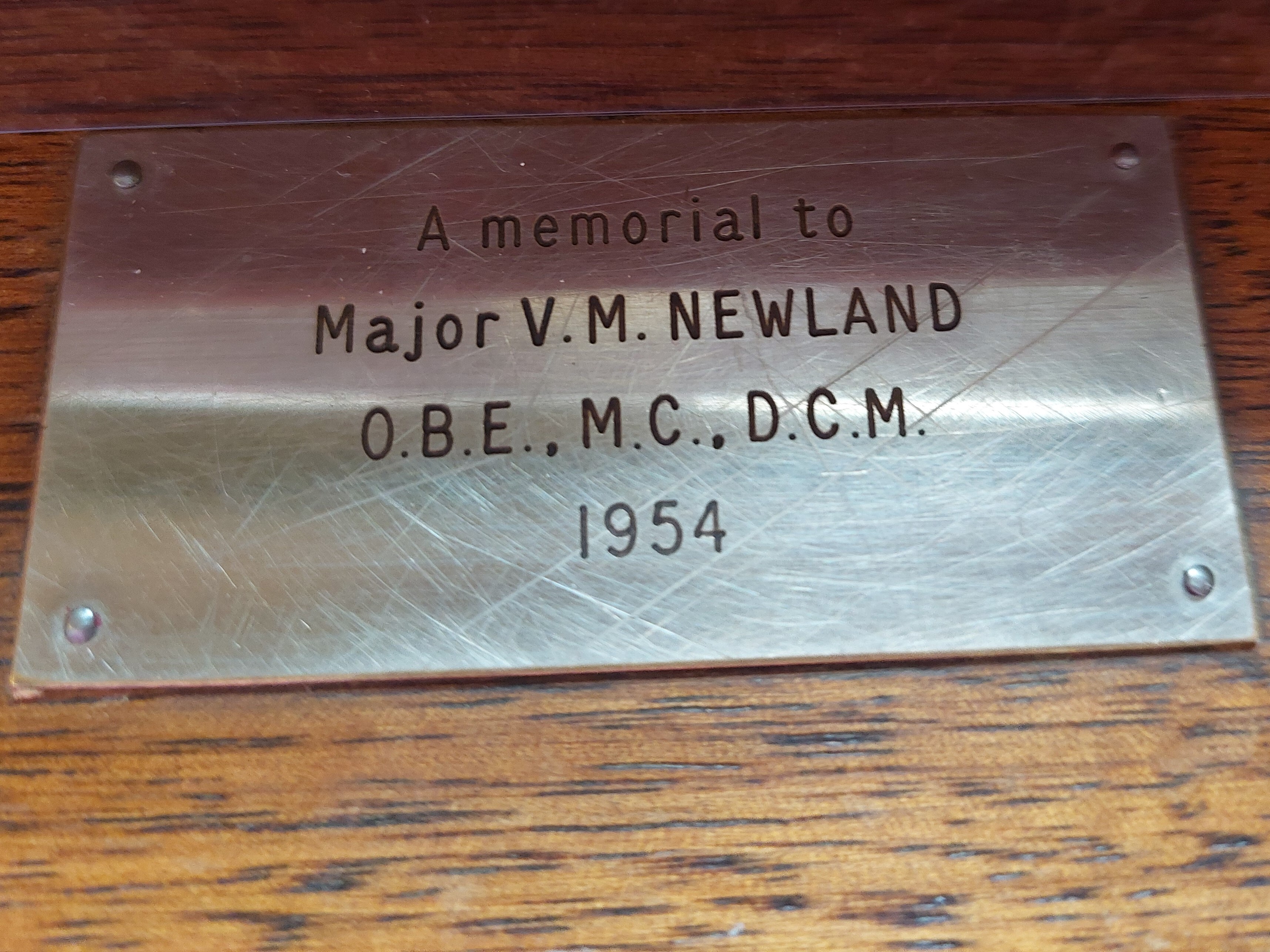
Newland Map Cabinet
An Australian oak map chest with six full width drawers. It bears an engraved silver plate inscribed: ‘A memorial to Major V. M. Newland, O.B.E., M.C., D.C.M., 1954.’ V. M. Newland was President of the Society in 1936-37.
Old Colonists’ Festival Dinner – S T Gill
A lithograph drawn on stone by Samuel Thomas Gill, printed by Penman and Galbraith, Adelaide, 27 March, 1851. The dinner commemorated the first sale of town land in March 1837. It is said that the faces are recognisable caricatures of those present.
Presented by the first Anglican Bishop of Adelaide, Augustus Short, to Sir Edwin Smith, Mayor of Adelaide.
Painting of Colonel Light’s Ship
A 19th century oil painting on canvas, signed with initials D.B. “H.M.S. Rapid, off Rapid Head, South Australia”, bears inscription from William Light’s Log, 12 October, 1836.
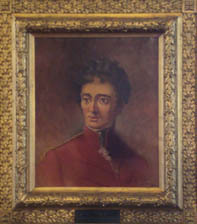
Portrait of Colonel Light
A portrait on canvas by George A. J. Webb, “Colonel Light,” signed and dated 1904,60 x 50 cm, in gilded gesso frame encrusted with oak leaves and acorns. Presented by the Hon. John Lewis.
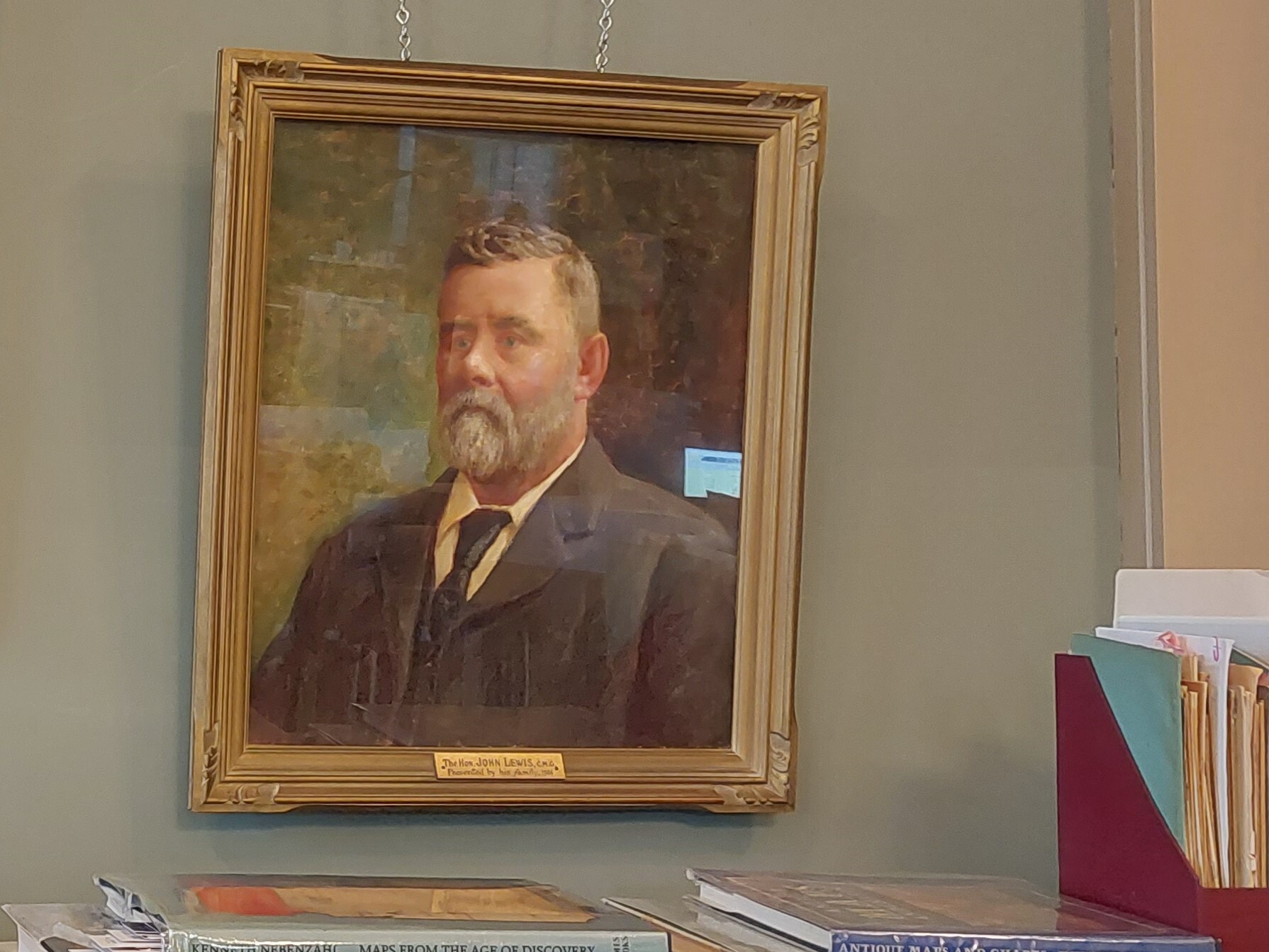
Portrait of John Lewis
An oil painting, artist’s signature indecipherable, of “The Hon. John Lewis, C.M.G.” Apart from his important role in the Society, Lewis was a member of the Legislative Council to which he was elected in 1897.
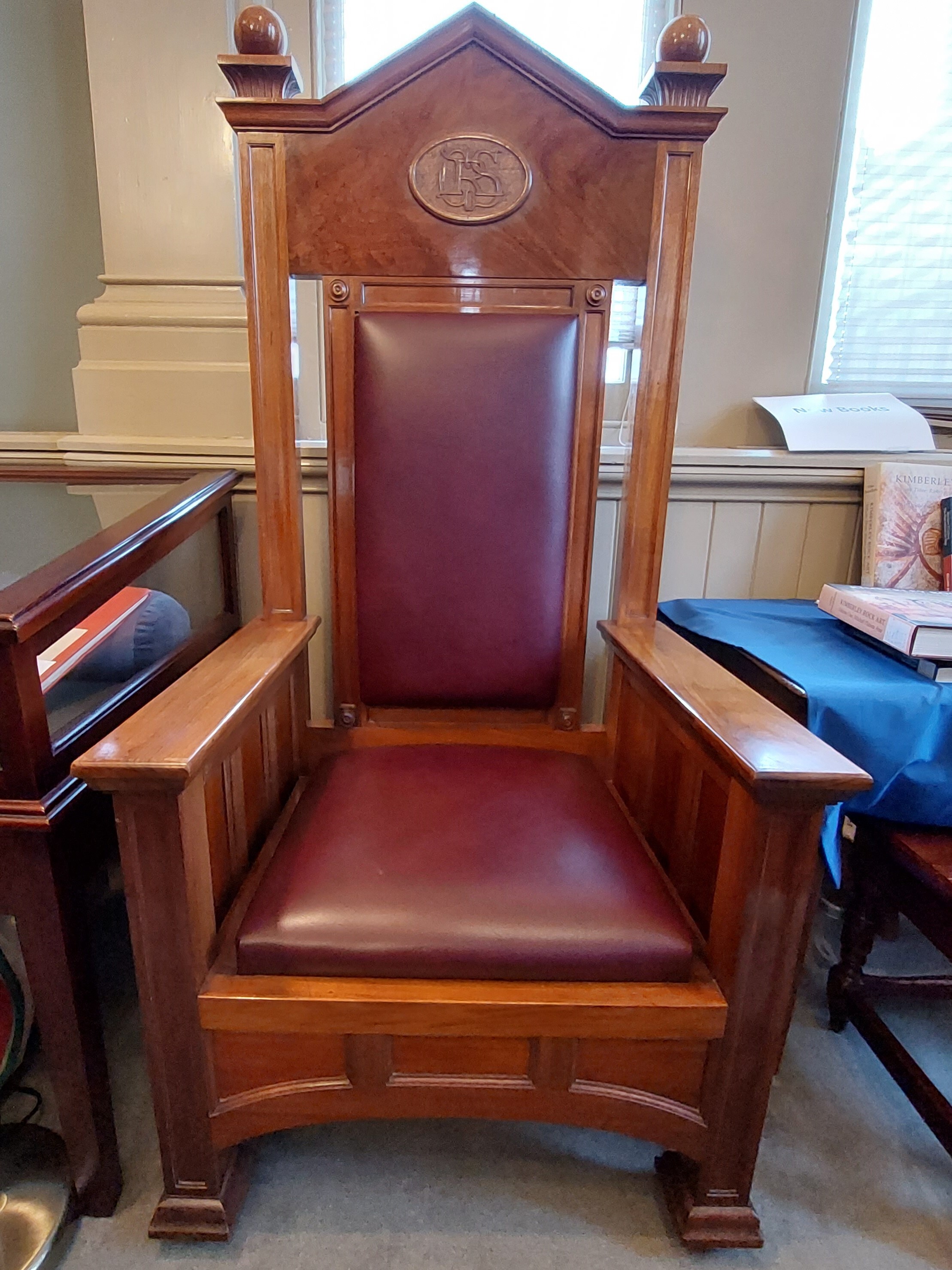
Presidents Chair
This throne, made entirely of Australian blackwood and upholstered in Australian leather by Messrs. Pengelley & Co., of Edwardstown, was offered to the Society as a gift in June, 1927, by the then President of the Society, Mr. A. A. Simpson.
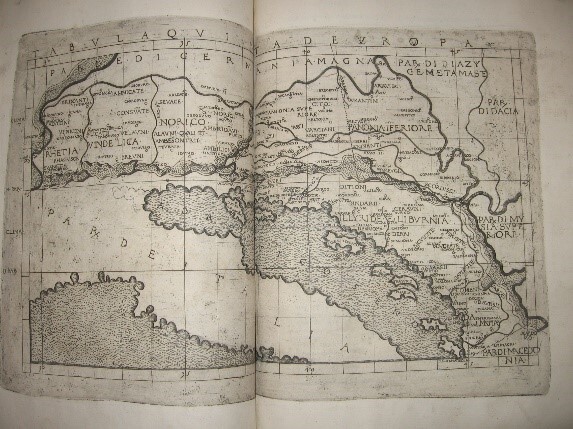
Ptolemy, Claudio, AD 100- AD 168 Geographia di Francesco Berlinghieri 1480 Francesco Berlinghieri (1440-1501)
The oldest book in the Library is Ptolemy's Geographia di Francesco Berlinghieri Florentine published in Florence by Nicolo Todescho ca 1480. This folio volume with 31 maps engraved on copper and is considered a monument of typography and the engraver's art. This edition is the first to contains the 27 high quality modern world maps, updated from the ancient maps, and, in addition, four new modern maps of Gallia Novella (France) Hispania Novella (Spain), Novella Italia (Italy) and Palestrina Moderna (Palestine).
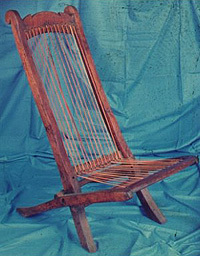
Stuart’s Table and Chair
A red gum writing table with moulded rim to the oblong top, full width drawer, turned wooden knobs, pine lined, legs of square tapering form, made by John McDouall Stuart in 1854 while in the employ of James Sinclair of Green Patch and bears engraved silver plate to this effect. Also chair threaded with kangaroo hide thonging made by Stuart.
Stuart’s Tree
At the termination of his third attempt at crossing the Australian continent between October, 1861-July, 1862, John McDouall Stuart planted a flag on a tree on the shores of Van Diemen’s Gulf overlooking the Indian Ocean. J.M.D.S. was cut into the bark of a large tree, a short way inland.
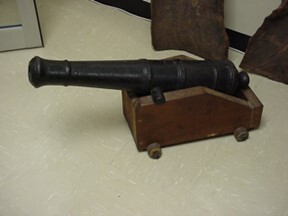
Sturt’s Cannon
Believed to have been carried by Captain Sturt, on his exploratory voyage down the Murray in 1830 and left with Mr. Williams at Gol Gol sheep station. The cannon was subsequently given to Captain Johnston, whose wife gave it to the Society in 1907. .However, another account maintains that it was carried by Major Mitchell, the explorer, and abandoned at a station on the River Darling.
Sturt’s Flag
Charles Sturt’s (1795-1869) explorations were aimed at solving the problem of the inland-flowing rivers. This is the Union Jack that Sturt unfurled as he entered the Murray from the Murrumbidgee, January, 1830. It was presented to the Society by Captain Geoffrey Sturt and Miss Katherine Sturt, grandchildren of Captain C. Sturt.
Sturt’s Sword.
This is a sword carried by Charles Sturt on his expeditions. It was donated to the Society by A. L. Williams, of Wallumbilla, Queensland.
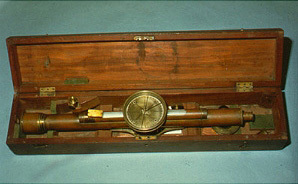
Sword, Blade and Scabbard worn by Colonel Light. Light’s Surveying Equipment.
Colonel William Light was appointed Surveyor-General of South Australia in 1836 with the commission to select a site for the capital city. He was thus the Founder of Adelaide, and the following are some of the equipment he used in his profession – a tripod, dumpy level and surveyor’s staff.
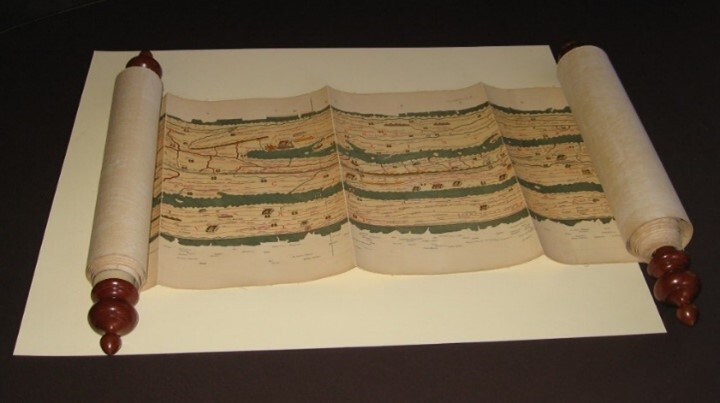
‘Peutinger Table’.
Maps of routes for specific purposes – military or trade – were produced by the Romans, and this example is a 19th century print of a map dating back to the first century, revised, corrected and added to for the next 900 years. It has no overall orientation and no consistent scale, resembling in this the ‘strip maps’ issued for specific journeys by the Royal Automobile Association.